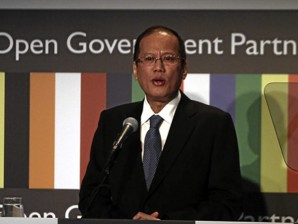It was worse than the fertilizer scam.
A P10-billion fund meant to help small farmers, fisherfolk and agriculture entrepreneurs raise their skills and production was used as a cash cow of agriculture officials, politicians and businessmen “favored” by the Arroyo administration for almost a decade, officials said.
The discovery of irregularities in Acef (Agricultural Competitiveness Enhancement Fund) has led lawmakers and agriculture officials to suspend the program in January and to review its implementation.
What they saw, according to officials who checked the Acef records, was a long list of companies and beneficiaries who failed to pay back their loans.
The same officials also heard of complaints from borrowers who said that agriculture officials demanded kickbacks in exchange for loan approvals.
Agriculture Secretary Proceso Alcala said his office had received complaints from beneficiaries and those who tried to apply for the fund that former agriculture officials had asked for kickbacks in exchange for approving their loans.
Legitimate projects were also set aside in favor of proponents who have questionable projects but are willing to provide kickbacks, officials said.
“As we investigated it, we found out that the majority of those who did not pay were the ones who were complaining about the kickbacks,” Alcala said. “It was as high as 20 to 35 percent,” he noted.
A senior agriculture official also noted that the Acef executive committee was lax in approving projects. Some proponents, who promised to give commissions, were not even required to appear at the
Department of Agriculture to explain their projects, the official said.
Alcala said it was the Acef management that was accused of being the recipients of bribes. “They got money out of proceeds. After the funds are released, something goes to them,” he said.
Although the reports and complaints were numerous, Alcala said it was difficult to pin down the errant officials. “Of course, these had no receipts,” he said.
Some borrowers were also reluctant to say something on record because they knew that they got the deal out of bad faith, Alcala said.
The practice of asking for commissions in exchange for loan approval was confirmed by Gregorio San Diego, president of United Broilers Raisers Association (Ubra).
Four years ago, Ubra applied as a cooperative for the Acef to build a broiler breeder facility in Pampanga. San Diego said his group was encouraged by then Secretary Arthur Yap, but when the application reached the central office of the
agriculture department, it was denied.
“They asked 10 percent from us,” he said, noting that it was considered a discount. “Others were told to give 35 percent,” he added.
In the end, Ubra decided not to push through with its application, San Diego said.
Senator Francis Pangilinan, cochair of the congressional oversight
Committee on Agriculture and Fisheries Modernization, and sources confirmed that some of those who applied for the fund were personalities and politicians “favored” by the past administration.
‘Lender of last resort’
An industry source and an agriculture official, who reviewed the project and requested anonymity because of lack of authority to discuss the matter, described the use of Acef in the last decade as “plunder.”
“This was bigger than the fertilizer scam,” the industry source said, referring to the misuse of P728 million in agriculture funds under then Undersecretary Jocelyn “Joc-Joc” Bolante.
The fund, intended to benefit farmers, was said to have been diverted to the campaign kitty of then President Gloria Macapagal-Arroyo in 2004. Bolante and
former Agriculture Secretary Cito Lorenzo have been charged with plunder at the Sandiganbayan.
“This was supposed to be for agricultural enhancement but they have become the lender of last resort,” the source said, referring to Acef.
Acef, established in 1996 and funded by tariffs from agricultural products, is a funding mechanism aimed at providing financial support to the agriculture sector to increase their competitiveness in the global market.
Safety net
The money from the taxes was supposed to be used to establish “safety nets” for agriculture sectors affected by trade liberalization.
“That was the basic tenet of Acef, but it was not followed. If it was implemented properly, say the industries were given common services, it would have made Philippine agriculture competitive. But this was not followed. Even those projects that were not aimed at competitiveness were given funding,” the industry source noted.
The fund was set up to enable farmers, fisherfolk, and cooperatives to upgrade their skills and facilities so that they can compete in an increasingly globalized agriculture market.
Loans up to P30M
Under the program, agricultural workers, cooperatives, nongovernment organizations, and local government units may take out loans ranging from P500,000 to P30 million.
Acef was supposed to have a 10-year life-span, but the agriculture department, during the term of former Secretary Yap, issued several memoranda extending the program and its scope.
Collateral-, interest-free
The program was especially designed to encourage small and medium agricultural enterprises to borrow from it as it does not demand a collateral from them and is interest-free. The lack of these requirements opened the fund to abuse and was the main reason for the low-repayment rate, officials said.
Acef contained P10.73 billion accumulated from collected tariffs from 1990 to 2010, according to the Department of Agriculture’s preliminary report as of February 2011.
During that period, the fund used P8.85 billion, mostly for grants and loans.
As of February, the agriculture department said P2.57 billion went to grants, while P5.82 billion went to loans to 299 accounts. Included in the loan portfolio was a P1-billion grant to the bankrupt Quedancor, which was supposed to be used for the agency’s training program. At about P372.78 million was used to fund scholarship programs.
Quedancor did not remit a single centavo to Acef and even borrowers who failed to pay were allowed to borrow huge sums again, officials said.
As of early 2011, only about P1.8 billion remained in Acef coffers as many of the creditors failed to pay back their loans over the years,
the Department of Agriculture said.
Failure
Despite the huge amounts of money that were funneled into the fund since its creation, the credit mechanism that was supposed to improve Philippine agriculture, provide employment in the countryside and raise the income of farmers and fisherfolk failed in its vision.
In March, the technical working group on Acef said: “Available data indicate that the Acef has not been able to provide loans to the marginalized farmers and fisherfolk; but mostly to small and medium enterprises.”
In a report, the Commission on Audit (COA) said Acef was a failure. “The purpose of the program to raise
farm productivity by extending credit to small farmers, fisherfolk and agricultural entrepreneurs was not achieved as manifested by the low collection rate of amortization due from the proponents. The inability of the proponents to pay the amortization is an indication that their livelihood agricultural activities did not succeed,” the report said.
Yap’s friend
One of the borrowers who was not punctual in paying his loan was Lyndon Tan, owner of Basic Necessity, a
vegetable farm in Cavite, and a friend of former Secretary Yap.
Yap, project head of the book, “The Art of Agribusiness: 111 and More Success Stories in Agri-Entrepreneurship,” cited Tan as an example of a successful Filipino farm entrepreneur.
Tan, according to a recent agriculture department audit, sells his greens to supermarkets and restaurants. He borrowed P38 million from the fund for his farm in the mid-2000s. He only paid P4 million of it.
The COA also noted that Acef was inefficient and questioned why certain companies that did not remit were still given a chance to borrow millions of pesos.
In its 2010 report, the COA said five proponents with Acef loans of P72.245 million were given additional loans of P35.659 million for the same project, even if previous loans were not yet paid.
Gemsum Marketing
The companies were identified by CAA as C and L Farms, Hi-Las Marketing Corp., Moraleda Farms, Queen’s Agro-Industrial Farms Inc. and Gemsum Marketing.
But that was just the tip of the iceberg. There were 46 proponents who got loans from 2000 to 2008 but “have not paid a single installment,” the agriculture department said. Their loans from Acef totaled P802.95 million.
Baler-Casiguran road
Senator Edgardo Angara, a former agriculture secretary who authored the law that established the Acef, has been identified as one of the beneficiaries.
Angara’s home province Aurora received P300 million from the fund, according to an audit by the agriculture department.
Angara was cited by two sources as the one who recommended projects to the Acef committee.
The audit by the agriculture department found out that Aurora, Angara’s home province, benefited from two grants.
In 2008, the local government of Aurora received P200 million for the concreting of the Baler-Casiguran Highway.
Kilusang Magbubukid ng Pilipinas said the Baler-Casiguran Road was built to serve Angara’s Aurora Pacific Economic Zone and Freeport project.
In 2007, Aurora State University received P100 million for a project called Enhancement of Technology-Based Agribusiness Industry.
In a phone interview, Angara said he could not recall recommending the grant of P200 million for the concreting of the Baler-Casiguran road.
“Who is the source of that report? I do not recall … Why would they even use the word competitiveness for that? And why would I recommend it,” he told the Inquirer Tuesday night.
Angara said it was more likely that the P200 million came from his pork barrel.
“And if it indeed came from my pork barrel, that would not be considered irregular since it came from my (Priority Development Assistance Fund),” the senator added.
With a report from Cathy Yamsuan
Philippines Government



